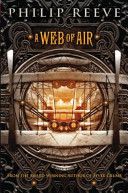
In Mayda, a post-apocalyptic city off the coast of Portugal, a brilliant young engineer and a mysterious recluse race to build a flying machine, unaware that powerful enemies will kill to possess–or destroy–their new technology.

In Mayda, a post-apocalyptic city off the coast of Portugal, a brilliant young engineer and a mysterious recluse race to build a flying machine, unaware that powerful enemies will kill to possess–or destroy–their new technology.
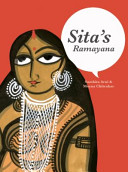
This version of The Ramayana is told from the perspective of Sita, the queen. After she, her husband Rama and his brother are exiled from their kingdom, Sita is captured by the proud and arrogant king Ravana and imprisoned in a garden across the ocean. Ravana never stops trying to convince Sita to be his wife, but she steadfastly refuses his advances. Eventually Rama comes to her rescue with the help of the monkey Hanuman and his army. But Rama feels he can’t trust Sita again. He forces Sita to undergo an ordeal by fire to prove herself to be true and pure. She is shocked and in grief and anger does so. She emerges unscathed and they return home to their kingdom as king and queen. However, suspicion haunts their relationship, and Sita once more finds herself in the forest, but this time she is pregnant. She has twins and continues to live in the forest with them.
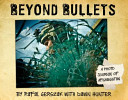
Award-winning photographer Rafal Gerszak spent a year embedded with the American military in Afghanistan, where he used his camera to document everyday life in the war-torn country. While there, he developed a deep affection for the land and its people, and he later returned on his own. Despite the dangers around him, he continued taking photos, exposing the plight of that besieged country.
Framed by journal entries that relate his experiences on two levels — as a foreigner looking for a deeper connection to a country that has stirred him and as a journalist looking for another side to the story — Beyond Bullets addresses the volatile situation in Afghanistan with sensitivity and profound insight. Through Gerszak’s lens, readers can see the shattered aftermath of military attacks and dismal hospitals and refugee camps, but they can also experience the vibrant activity of life in the markets, at home and on the Muslim day of rest.
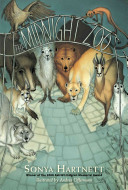
Twelve-year-old Andrej, nine-year-old Tomas, and their baby sister Wilma flee their Romany encampment when it is attacked by Germans during World War II, and in an abandoned town they find a zoo where the animals tell their stories, helping the children understand what has become of their lives and what it means to be free.
When the Hag of Dribble, an orphan boy, and a troll called Ulf are sent to rescue a princess from an ogre, it turns out to be far from the routine magical mission they expect.
Makis and his moher Sofia escape a devastating Greek earthquake which has claimed his father’s life. North London is a ver different place – but Makis quickly wins a covetted place in the school football team. Unlike her son, Sofia, isolated by her grief and lack of English, sinks into depression. Makis has a brilliant idea to help her – using books from school he begins to teach her to read. But competing loyalites mean that sooner or later, something has to give and his hard-won reputation at school appears to be in ruins.
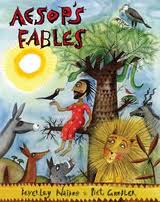
A little mouse saves the life of a great lion; hungry Grasshopper, too lazy to store food, gets no mercy from the industrious ants; crafty Jackal tricks Klipspringer to escape death – but is himself tricked by the cock and the dog…. Here are 16 of Aesop’s wise, witty and timeless fables, portrayed for the first time in an African setting.
Nicholas Herrera started life as a mischievous, dyslexic boy, born into one of the old Spanish families of New Mexico. Bad teachers and poor schooling helped him to lose himself in drugs, drinking, riding motorcycles and driving fast cars. A near-death experience, a wonderful mother and a fascination with making art saved him. Today Nicholas Herrera is one of the most noted Santeros in the US. His work is displayed in folk-art galleries across the country and is collected by the Smithsonian. He is noted for the highly personal, political nature of his work and his innovative treatment of what can sometimes be a rather bland art form designed to sell to tourists. His work is intensely personal and even confessional. A survivor of alcoholism and drug addiction, which almost led to his death in a terrible car crash, Herrera is now sober and remarkably productive. His art is his life and his life is his art. Extraordinarily charismatic, Herrera is the grandson, nephew and son of artists. His young daughter is now following in his footsteps.
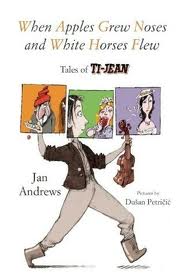
In these three imaginative stories, Jan Andrews introduces us to Quebec’s traditional folktale hero, Ti-Jean. He’s an endearing character who is both wise and foolish, and though he does find himself in hard situations (often of his own making), in the end, he somehow manages to do what needs to be done. In “Ti-Jean and the Princess of Tomboso” he eventually outwits a greedy princess; in “Ti-Jean the Marble Player” he gets the best of a pint-sized scoundrel; and in “How Ti-Jean Became a Fiddler” he turns the tables on a too-clever-for-her-own-good seigneur’s daughter, and finds true love in the process.
Migrant farmers and their families represent an ever-growing body of laborers around the world. They are used as cheap labor but most of them are not allowed to settle down, integrate into their host countries and become citizens with full rights. This is, of course, devastating to their children.
Among these groups are the Mennonites from Mexico, who originally went to Mexico from Canada in the 1920s. They speak “Low German” and though many are poor, they are an important part of the Mexican farm community. Because of free trade and the fact that Mexican farmers cannot compete with highly subsidized US farmers, they have been forced to come back to Canada — as migrant workers — in order to survive. Anna is the child of Mennonites from Mexico, who have come north to harvest fruit and vegetables. Sometimes she feels like a bird, flying north in the spring and south in the fall, sometimes like a jackrabbit in an abandoned burrow, since her family occupies an empty farmhouse near the fields, sometimes like a kitten, as she shares a bed with her sisters. But above all Anna wonders what it would be like to be a tree rooted deeply in the earth, watching the seasons come and go, instead of being like a “feather in the wind.”